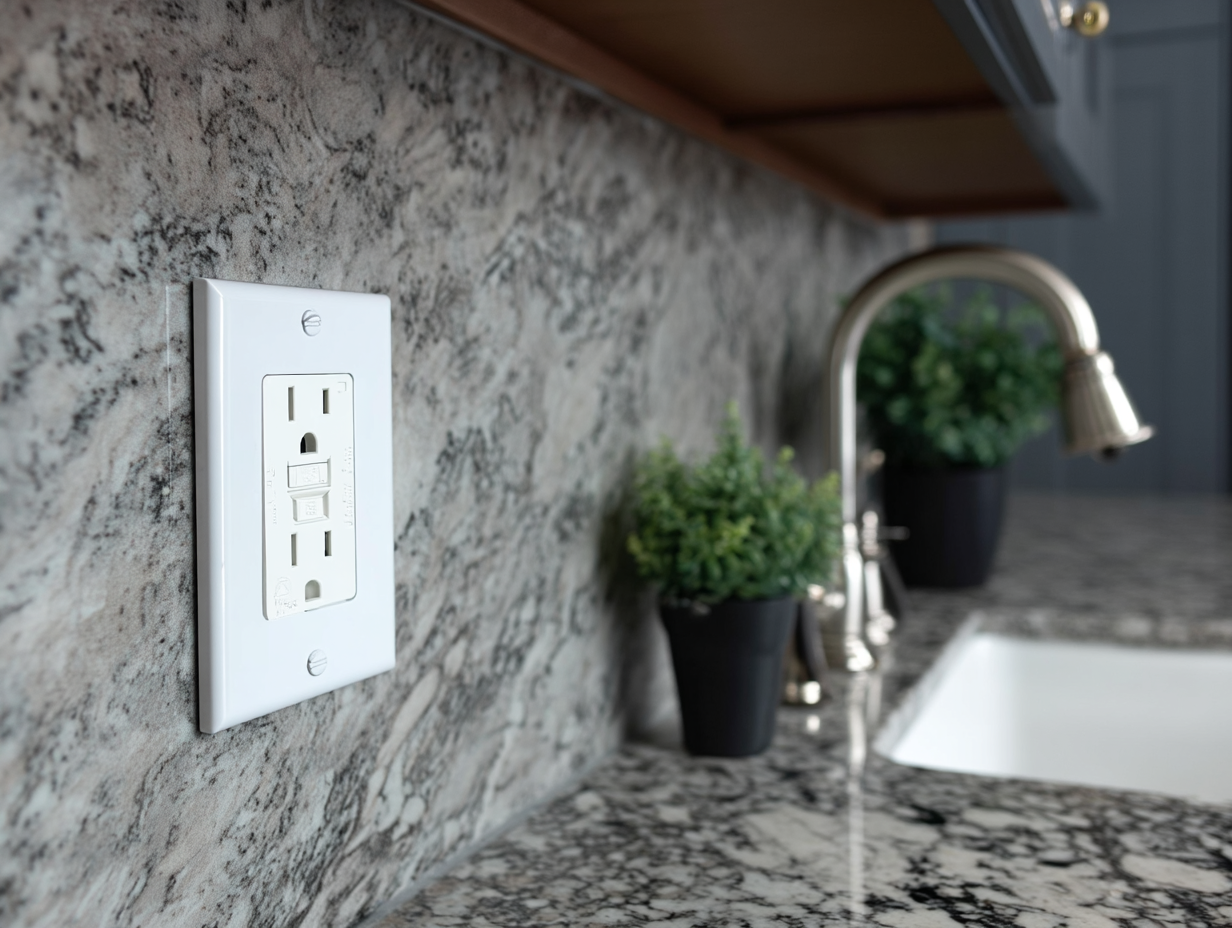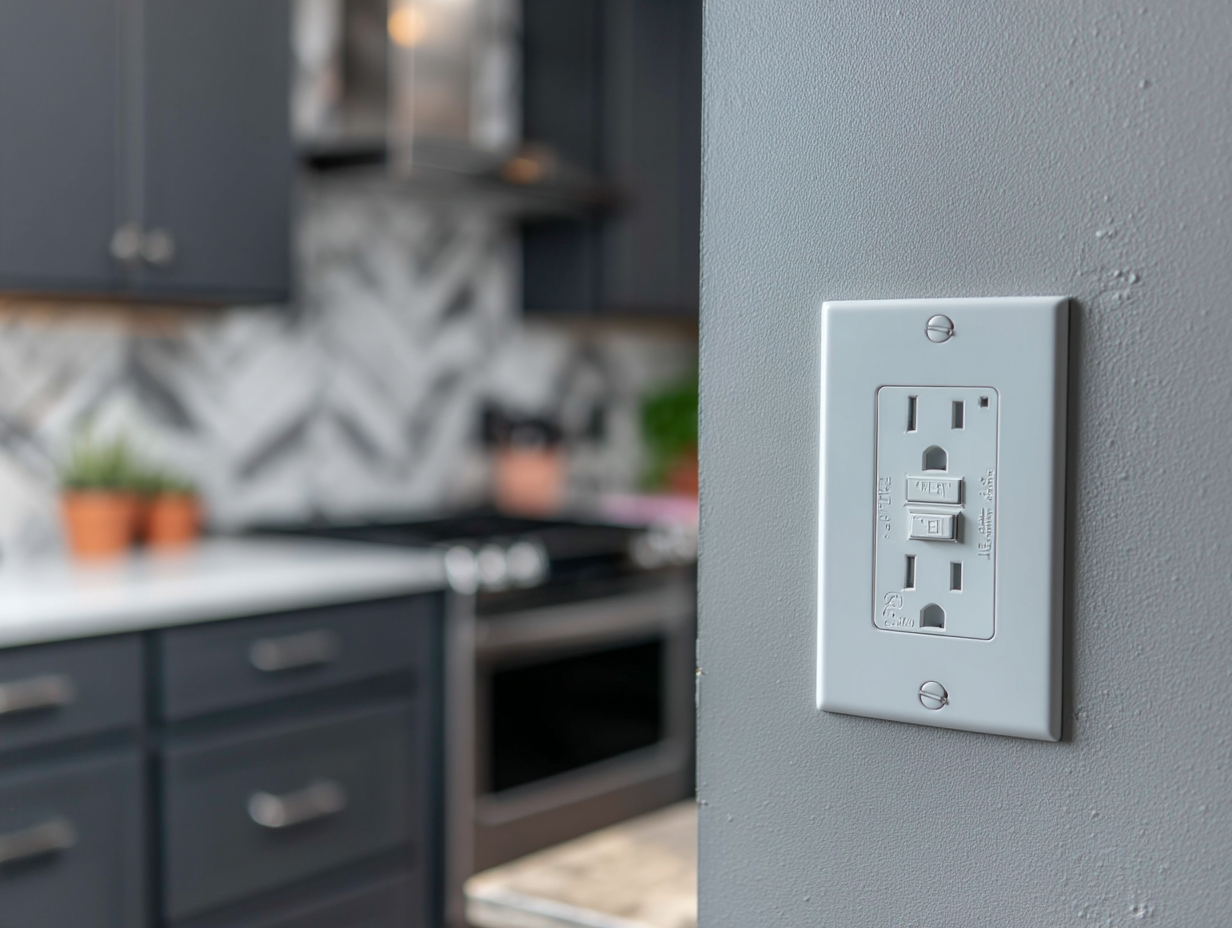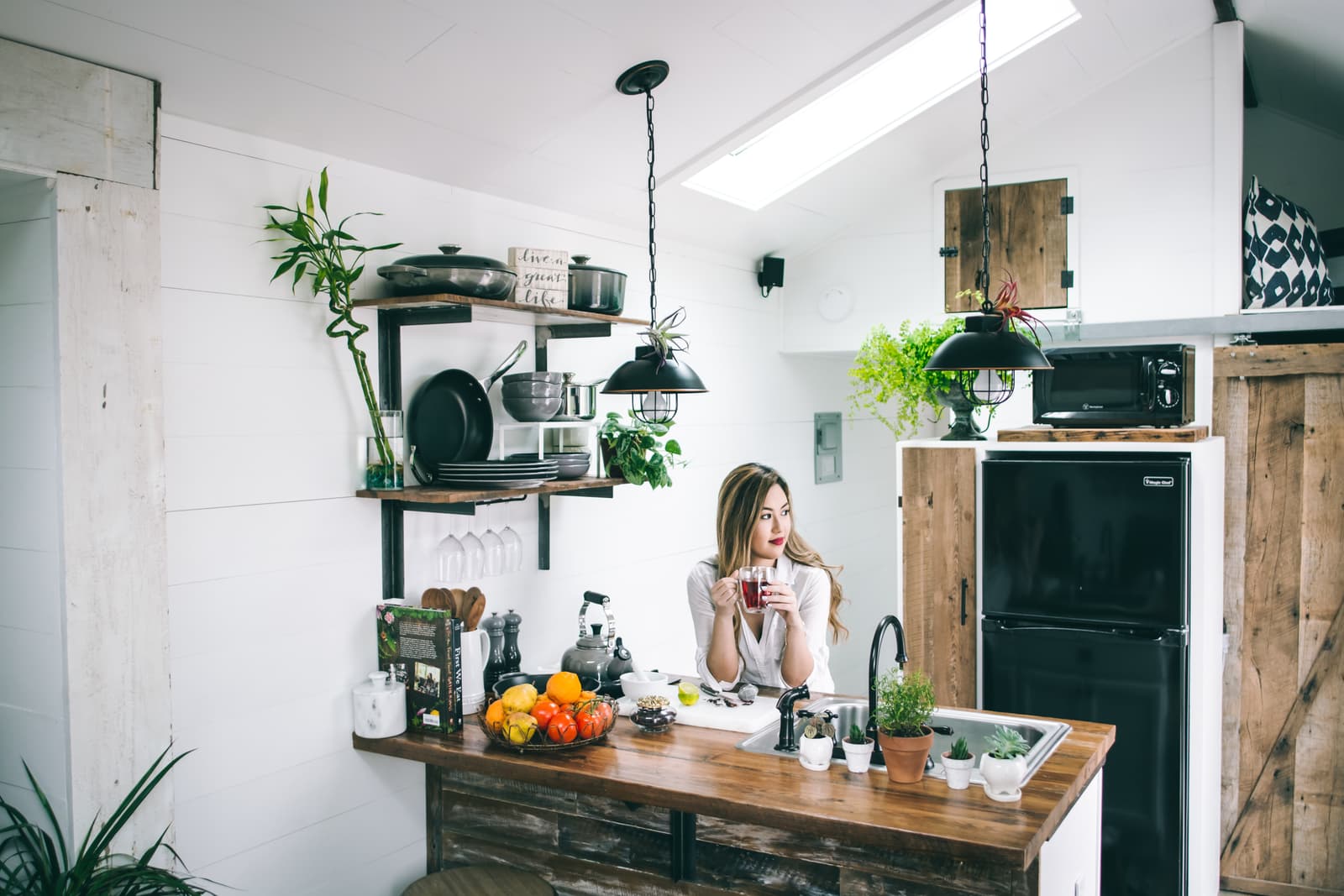GFCI Outlet – When and Where Should You Install It in Your Home?
By Paul Riopel
Updated on May 9, 2025

GFCI Outlet – When and where should you install it in your home?
Since 2007, the use of Ground Fault Circuit Interrupter (GFCI) outlets has been mandatory in certain parts of a building. These outlets are designed to ensure user safety by preventing electrocution risks when there’s contact with a conductive element, such as water. You’ll mainly find them in kitchens, bathrooms, and outdoor electrical installations. Here’s what you should know about GFCI outlets:
What is the purpose of a GFCI outlet?
Where should GFCI outlets be installed?
Who can install or repair a GFCI outlet?
How does a GFCI outlet work?
How does a ground fault circuit interrupter (GFCI) socket work?

Source : Soumission Rénovation
Compared to a standard outlet, a GFCI outlet is notably deeper and more complex internally. It contains many components, while a conventional outlet is quite basic.
The GFCI (also known as a DDFT outlet in French) functions as follows:
It continuously monitors the electrical current flowing between the circuit and the connected device.
If it detects a difference between the current entering and exiting the device, it immediately cuts the power.
A practical example:You’re drying your hair in the bathroom.Your child turns on the faucet, and water splashes your hand holding the hairdryer.The GFCI outlet detects the disruption in electrical flow and cuts the power, protecting you from an electric shock.
To ensure safety, GFCI outlets can detect electrical imbalances as small as 5 milliamps and shut off the current within a fraction of a second upon contact with water (splash, leak, wet surface).
Different Types of GFCI Outlets
Here are the three main types of GFCI outlets on the market:
GFCI Type | Characteristics |
|---|---|
Type A | For residential kitchens, bathrooms, and outdoor areas. Sensitivity: 30 mA. Trip time: 0.04 seconds. |
Type B | For commercial or industrial use (public pools, labs, factories). Very high sensitivity. Sensitivity: 5 mA. Trip time: 0.02 seconds. |
Auto-reset GFCI | For systems requiring uninterrupted power (hospitals). |
There are also Class C, D, and E GFCI outlets, which are less common in residential settings.
Installing a GFCI Electrical Outlet
Why install a GFCI outlet?
First, because it’s the law. Provincial codes vary slightly, but all require GFCI protection for outlets located near water sources.
Generally, the building code mandates GFCI outlets if an outlet is within 1.5 meters (5 feet) of a water source due to the increased risk of electric shock and fires.
To verify compliance, check your provincial government's latest building code regulations.
You can also read:When Should You Update Your Electrical System?
Where should you install a GFCI outlet?

Source : Soumission Rénovation
GFCI outlets should be installed in any room where water is present or where outlets could come into contact with moisture, including:
Room | Where to Install GFCI Outlets |
|---|---|
Kitchen | Near large appliances and within 1.5 meters of the sink. |
Bathroom | All outlets must be GFCI-protected. |
Basement | If unfinished, all outlets must be GFCI-protected. Also recommended for flood-prone areas. |
Laundry Room | Near sinks or water sources. |
Garage | All outlets must be GFCI-protected. |
Outdoor | Especially near hoses, pools, or other water sources. |
How are GFCI outlets installed?
If you’re not a licensed electrician, know that this task is reserved for certified professionals. However, for curious readers, here’s a general outline:
Turn off the power at the breaker panel.
If replacing an existing outlet, remove it and check that proper wiring is already in place.
If wiring is missing, it must be run from another outlet or switch (may require opening walls).
Identify load and line wires using a multimeter and voltage tester.
Follow the manufacturer’s installation instructions.
Neatly insert the wires, attach the outlet, and secure the wall plate.
Test the GFCI to ensure it functions properly.
Note:A GFCI outlet can protect standard outlets on the same circuit if properly wired.
Who can install a GFCI outlet in my home?

Source : Soumission Rénovation
Only a certified electrician can legally install a GFCI outlet.In Quebec, this is mandatory by law. Elsewhere in Canada, regulations may vary, but it is always recommended to hire a licensed electrician to ensure safety and compliance.
DIY installations could void your home insurance coverage in case of an electrical incident.
More reading:
Need help finding an electrician? Fill out our electrical project request form.
Installing GFCI Outlets in Heritage Homes
If your home was built before 2007, it may not have GFCI outlets.Inspect the key areas of your home, and if needed, update your system to meet current safety standards.You may also find that your entire electrical panel needs upgrading.
GFCI Outlet FAQ
What is the required distance between a GFCI outlet and a water source?
Why isn’t my GFCI outlet working?
– Damaged outlet casing allowing moisture intrusion
– Circuit overload
– Poor wiring connections
– Faulty or deteriorated wiring
– Defective outlet
What to do if a GFCI outlet stops working and needs to be replaced?
Are GFCI outlets recommended for bathrooms?
Installing a GFCI Outlet in a Kitchen – What to Know
Are GFCI outlets suitable for outdoor use?
What does GFCI mean?
Looking for something else?
Related articles
The latest industry news, interviews, technologies, and resources.

Editorial Team
•26 Jul 2024
Electrical wires are essential, yet visually undesirable. They can, at times, cramp your décor, further encombering your spaces at floor level—all stuff one could do very well without.

Editorial Team
•07 Nov 2023
Recessed lighting is a great feature and acts as a way to enhance any space by introducing more light. In fact, one of the reasons it is such a popular way to illuminate parts of your home is thanks to the way it can make small spaces feel bigger.

Editorial Team
•02 Aug 2024
Working on a construction site has its fair share of risks, regardless of the nature of the work involved. Since worker safety is an ever-present concern, it requires the cooperation of quite a few players. Therefore, last October, the CNESST initiated an awareness campaign, targeting construction industry workers, employers, general contractors, and affiliated individuals in the province of Quebec.

Editorial Team
•07 Nov 2023
When it comes to the ins and outs of owning a home, the roof may be last on the list of things we put time and attention into. Of course, the roof is a fundamental aspect of any well-maintained home, and its longevity will greatly affect the life of your house overall. Ventilation is a key part of maintaining a roof, so if you hadn’t considered roof vents before this moment, now is as good a time as any.

Editorial Team
•17 Jan 2025
A lack of space can be seen as an obstacle when thinking about the layout of our home. Of course, that doesn’t mean that it will necessarily be more complicated. Instead, it's all a matter of perception.